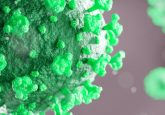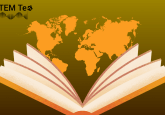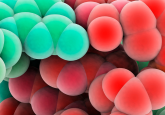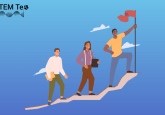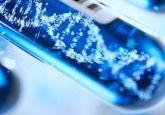Editor’s Picks | October
In this episode of Editor’s Picks, we bring you the latest news in the life sciences from October including DishBrain, a dish of neurons that can play a computer game of table tennis, and click chemistry, which was awarded the Nobel Prize in Chemistry this year.
Articles featured in this month’s episode include:
- Who won the 2022 Nobel Prize in Medicine?
- Who won the 2022 Nobel Prize in Chemistry?
- Nanotherapy prevents both arterial and venous thrombosis
- Love really hurts without you: oxytocin helps regenerate the heart
- Biochemists find a way to mend a broken heart
- Step aside 3D printing, there’s a new technique for biofabricating a heart
- The neurons that came to play…in vitro
- Hispanic scientists throughout history
- Where culture meets science: enriching the research experience
Let us know which articles you enjoyed this month by tweeting us @MyBioTechniques using #BTNEditorsPicks
[00:00 – 00:41] Hello! And welcome back to Editor’s Picks, brought to you by BioTechniques. As another month rolls over and we turn the pages of our calendars, it’s time to catch up on the latest news.
Join me, Aisha Al-Janabi, as I round up the weird, the wonderful and the incredible research going on in the life science community. Each month I’ll be bringing you my favorite news stories and interviews in this bitesize podcast to accompany you whilst you’re waiting for your centrifuge to run or your kettle to boil.
[00:41 – 01:09] October is not only spooky season but is also awards season as the Nobel Prizes were announced earlier this month
This year, Svante Pääbo was awarded the Nobel Prize in Physiology or Medicine for his pioneering work sequencing extinct hominins. Svante is known as the father of paleogenomics having successfully sequenced the first full-length Neanderthal genome, giving rise to novel understandings of our evolutionary history.
[01:09 – 02:12] As a chemistry graduate, I was particularly excited to follow the Nobel Prize announcement in chemistry, which filled my Twitter feed for a good few days following the awards. The Nobel Prize in chemistry was shared between Carolyn Bertozzi, Barry Sharpless and Morten Meldal for developing click chemistry and biorthogonal chemistry. I remember learning about these topics during my degree, so it was pretty cool to see this be awarded the prize.
Click chemistry is a reaction where molecular building blocks elegantly snap together in a quick and irreversible reaction, resulting in a high yield while avoiding byproducts. Bioorthogonal chemistry are reactions that do not interfere with the biochemistry of a living system.
Barry and Morten separately arrived at what is considered the ‘ideal’ click chemistry reaction, which is a copper-catalyzed azide-alkyne cycloaddition. Carolyn took these principles and found a way to remove the copper catalyst so click chemistry can be applied in living cells. Carolyn utlized this biorthogonal click reaction to label molecules on the cell surface called glycans. In doing so, she found these molecules help protect tumors from the immune system.
[02:12 – 02:50] In other news, a novel nanotherapy that prevents blood clots in both arteries and veins has been developed. Researchers from University Hospitals Cleveland Medical Center and Case Western Reserve University identified a targetable pathway that occurs in both types of clots, which were previously thought to have distinct underlying mechanisms. In animal models, the researchers found that a type of white blood cell called neutrophil is overactive in both types of blood clotting mechanisms and identified a cluster of receptors that are unique to activated neutrophils. These findings could lead to therapeutics that are especially necessary for cancer patients, as blood clots are a common complication.
[02:50 – 03:27] We’ve had quite a few articles about hearts this year, including biofabricating a human ventricle, and a strategy to return heart muscle cells to a stem cell-like state to promote their regeneration. This month, we heard about how oxytocin – the neurohormone responsible for pleasure – might help regenerate the heart as well. A study in zebrafish and human stem cell cultures found that oxytocin was responsible for triggering the process of regenerating cardiomyocyte cells from epicardium-derived progenitor cells. Further research is needed to investigate whether oxytocin would have the same stimulating effect in the human body as well as how it could be harnessed as a therapy.
[03:27 – 03:58] Sometimes, science really does feel like science fiction and makes you go, “How crazy is that?!” and this next story is no different. A new study demonstrated that neurons cultivated in a dish have the ability to learn and exhibit awareness in a simulated game environment. An international collaboration showed that 800,000 brain cells in a dish, aptly called “DishBrain”, is capable of playing a table tennis computer game. This provides opportunities for probing real brain functions beyond those afforded by artificial intelligence models.
[03:58 – 05:15] It was also Hispanic Heritage Month from the 15th of September until the 15th of October, which I thought was the perfect opportunity to find out the stories behind some Hispanic scientists that contributed to scientific advancements. I loved researching this article and I think putting scientific breakthroughs into political and historical context is so valuable as well as interesting to read about.
In this article, I researched Ynéz Mexía, who was the first Mexican American female botanist and went on many expeditions and preserved around 145,000 plant specimens. I also found out about Sarah Elizabeth Stewart who led the way to viral oncology and proved that cancer could be caused by a virus. I also learned about the forgotten father of the pill, Luis Ernesto Miramontes, who was just a student when he identified the final step needed to synthesize progesterone derived from the Mexican yam. You can read about these scientists, and a couple of others, in my article on BioTechniques now.
We’ve also been chatting to Hispanic scientists about their research in different fields. Our Assistant Editor Bea Bowlby spoke to Ulises Ricoy about his research developing hands-on approaches to study invertebrate behavior and brain physiology to make neuroscience more accessible for marginalized students.
You can find all of our Hispanic Heritage Month interviews linked in the show notes of this episode.
[05:15 – 06:00] And that brings us to the end of another Editor’s Picks episode. Let us know what your favorite articles were this month by tweeting us at @MyBioTechniques and use the hashtag #BTNEditorsPicks. If you’d like to find out more about any of these articles check out the show notes.
Thank you for listening.
Until next time, bye.
